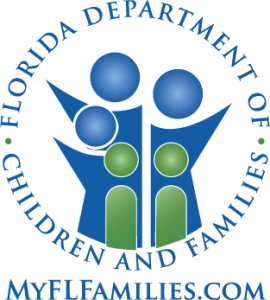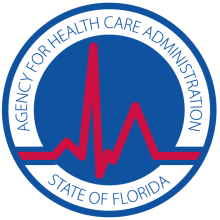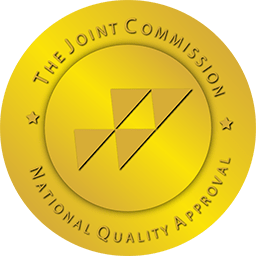
Prescription drug abuse has become a major concern for addiction treatment providers. Patients and users may underestimate the dangers of abuse and addiction, as drugs like OxyContin® are not illegal and don’t carry the same stigma as heroin or cocaine.
Over $78 billion in prescription and over-the-counter (OTC) drugs are produced each year in the United States. Although most people use these medications properly, a significant number take them without a doctor’s prescription or use more than prescribed or for reasons other than their intended use. Psychotherapeutic drugs (stimulants, sedatives, tranquilizers, and analgesics available through prescription) become abused substances because they directly affect the brain and central nervous system (CNS), producing the effects the abuser is seeking. In 1998, the Substance Abuse and Mental Health Services Administration’s (SAMHSA) National Household Survey on Drug Abuse showed that more than 20 million people over the age of 12 reported having used one or more psychotherapeutic drugs for non-medical purposes at some time in their lives. Stimulants, analgesics, and tranquilizers were the most widely used. In 1999, 4 million Americans reported that they were using prescription drugs for non-medical use.
Commonly Abused Prescription Drugs
Three classes of prescription drugs are most commonly abused:
1. Opioids – primarily used for treating pain.
2. CNS depressants – barbiturates and benzodiazepines prescribed for anxiety and sleep disorders.
3. Stimulants – used to treat sleep disorder narcolepsy, attention-deficit hyperactivity disorder (ADHD), and obesity.
1. Prescription Opioids
The opioid class of drugs is prescribed because of its analgesic (pain-relieving) properties. Opioids prescribed for pain include: Morphine, Codeine, OxyContin®, (Oxycodone) Darvon®,(Propoxyphene) Vicodin®, (Hydrocodone) Dilaudid®, (Hydromorphone) Demerol®, (Meperidine) Lomotil®, (Diphenoxylate). Opioids are also called narcotics. Morphine is often used to alleviate severe pain before or after surgery, while milder pain may be treated by codeine. Among the drugs listed above, Demerol may be prescribed less often due to its side effects, while a few drugs such as codeine and diphenoxylate (Lomotil) can be used to relieve coughs and diarrhea in addition to pain.
How Opioids Work
Opioids block the transmission of pain messages to the brain by attaching to certain proteins called opioid receptors in the brain, spinal cord, and gastrointestinal tract. Opioids can cause drowsiness, constipation, and depressed respiration, depending upon the amount consumed. When opioid drugs are abused, they can also cause feelings of euphoria by affecting the brain regions that control pleasure.
Consequences of Opioid Use and Abuse
Opioids are powerfully addictive. Tolerance, physical dependence, and addiction can result from long-term use of opioids. As the body develops tolerance for opioids like OxyContin, the user needs higher and higher doses to feel the same. Abusers experience withdrawal when they reduce or stop using the opioid, making it impossible to quit by themselves. Withdrawal symptoms include: restlessness muscle and bone pain, insomnia, diarrhea, vomiting, cold flashes with goose bumps, involuntary leg movements. One large dose of an opioid drug could lead to death from severe respiratory depression. Despite the potent addictive qualities and dangers of abuse of opioids, when medical use of opioids is properly managed, they are safe, rarely leading to addiction and providing effective pain management. Opioids should not be combined with other drugs except when supervised by a physician. Other substances that depress the central nervous system, like alcohol, antihistamines, barbiturates, benzodiazepines, and general anesthetics, can increase the risk of life-threatening respiratory depression.
OxyContin®
OxyContin, the brand name for oxycodone hydrochloride, is a semisynthetic opioid analgesic. OxyContin is prescribed for chronic or long-lasting pain such as back pain, cancer, or arthritis. The active ingredient in OxyContin is oxycodone, which is also found in drugs like Percodan® and Tylox®. However, OxyContin contains 10-160 mg of oxycodone in a timed-release tablet. Painkillers such as Tylox contain 5 mg of oxycodone and often require repeated doses to provide pain relief because they lack the timed-release formulation.Addiction to OxyContin is as severe as heroin, as they are both derived from opium. In some geographical areas, abuse of OxyContin is more prevalent than the use of heroin.OxyContin abuse has increased dramatically in recent years.
Treatment for Addiction to Prescription Opioids
To be effective, opioid detoxification is often necessary before treatment of opioid addiction. This allows for treatment and supervision of withdrawal syndrome, helping the patient’s mind and body to adjust to the lack of opioids. Once opioid detoxification is complete, a treatment plan can be put into place.Treatment for prescription opioid addiction draws on treatments successfully used for heroin addiction, since heroin shares the same potential effects and withdrawal syndrome.
2. Benzodiazepines and Barbiturates – CNS Depressants
Central Nervous System (CNS) depressants slow normal brain function. CNS depressants, including benzodiazepines (benzos) and barbiturates, are commonly used in the treatment of anxiety and sleep disorders.
Benzodiazepines
Barbiturates such as mephobarbital (Mebaral®) and pentobarbital sodium (Nembutal®) are prescribed to treat anxiety, tension, and sleep disorders. If improperly used, barbiturates can cause an individual to feel depressed or experience respiratory difficulties, in addition to physical and psychological dependence.Barbiturate abusers prefer the Schedule II short-acting and intermediate-acting barbiturates that includeAmobarbital (Amyta®) Pentobarbital (Nembutal®) Secobarbital (Seconal®) Tuinal (amobarbital/secobarbital combination)Schedule III short and intermediate-acting barbiturates include:Butalbital (Fiorina®) Butabarbital (Butisol®) Talbutal (Lotusate®) Aprobarbital (Alurate®)
How CNS Depressants Work
Most CNS depressants affect the neurotransmitter gamma-aminobutyric acid (GABA) to produce their effects. GABA’s role in the brain is to decrease brain activity. CNS depressants work by increasing GABA activity, which in turn decreases brain activity and produces drowsiness or a calm feeling. Different classes of CNS depressants may attain this resulting GABA activity through varying means.
Effects of CNS Depressants
When beginning a prescribed treatment using barbiturates or benzodiazepines, the patient may feel drowsy and clumsy. However, after a few days, the body adapts to the presence of the CNS depressants and these side effects fade away.The body can continue to adapt to the drug over time, creating tolerance, so more and more of the drug is required to produce the desired effects. Physical dependence may develop, and withdrawal symptoms will be experienced when the patient stops taking the drug in the same doses or altogether.
Treatment for Addiction to CNS Depressants
Withdrawal from barbiturates and benzodiazepines can be dangerous, even fatal. No one should try to quit without medical supervision. The dose must be reduced gradually through detoxification.To help patients addicted to CNS depressants as they adapt to a drug-free lifestyle, counseling and cognitive-behavioral therapy can be useful.In addition, barbiturates and benzodiazepines may only be one of several drugs abused by someone who is addicted. In such instances, addiction to each of the substances must be treated.
Xanax®
Xanax addiction progresses quickly and has become a serious health problem for many people. Xanax is a central nervous system depressant that is used to treat many disorders from anxiety to stress. Addiction to Xanax occurs when people use it more than directed to try to keep unwanted feelings at bay.Xanax is the brand name for the prescription drug alprazolam. Addiction is a common side-effect of alprazolam. It creates a calming effect in the brain by slowing it down.As with other CNS depressants, drowsiness is usually experienced in the beginning of use until the body adapts. This adaptation of the body is actually the building up of tolerance to Xanax.
Rohypnol®
Rohypnol, generically known as flunitrazepam, is a benzodiazepine prescribed as a sleeping pill. Rohypnol is the most widely prescribed sedative/hypnotic in Europe but is not licensed for sale in the US. Produced by Hoffmann-LaRoche in Mexico and other countries, Rohypnol is also marketed in Central and South America and Asia. Rohypnol is sold in bubble packs of 1 or 2 mg doses. Generic and illegally manufactured versions exist as well, although the branded product seems to be preferred among illicit users.The illicit use of flunitrazepam is characterized by its combined use with other drugs, although it may be used alone, too. Rohypnol enhances the high produced by low-quality heroin and has been so used in Asia since the early 1980s. Rohypnol mellows the high of cocaine and eases a user down from a crack or cocaine binge.
3. Stimulants
Students studying long hours, athletes who think their performance can improve from drugs, and workers who want to stay awake on the job often use stimulants. Amphetamines and caffeine are stimulants used primarily to delay the onset of mental and physical fatigue.Stimulants enhance brain activity, causing the following effects:Increase in alertness, attention, and energy Elevated blood pressure Increased heart rate and respiration
The drug compounds of stimulants are often found in diet pills which, if misused, can lead to anorexia nervosa. Anorexia nervosa is a pathological loss of appetite thought to be psychological in origin. Anorexia nervosa is manifested in extreme dieting and excessive thinness.
Caffeine is also found in many beverages, pain medications, and allergy and cold remedies. From a strong stimulant such as cocaine to nicotine in cigarettes and caffeine in coffee and cola drinks, stimulants are an intimate part of our lives.Some stimulants that may be prescribed include:Dexedrine® (dextroamphetamine) Ritalin® (methylphenidate) Adderall® (d-amphetamine and amphetamine mixture)Originally, stimulants were used in treatment of asthma and other respiratory problems, obesity, neurological disorders, and many other illnesses. However, they were prescribed less and less as addiction and abuse emerged as dangers of stimulants.Currently, physicians prescribe stimulants in treatment of only a few health conditions such as narcolepsy, attention-deficit hyperactivity disorder (ADHD), and depression that has not responded to other treatments. Stimulants also provide suppression of appetite for short-term treatment of obesity. Stimulants are also sometimes used in treatment of asthma.Unusually high doses or excessive use of stimulants over long periods of time can lead to:Anxiety Hallucinations Severe depression Physical and psychological dependence
How Stimulants Work
Stimulants contain chemical structures that are like the neurotransmitters called monoamines, which are found in the brain. Theses monoamines include norepinephrine and dopamine. Stimulants work by increasing the amount of these neurotransmitters. The increased neurotransmitters in turn lead to:Increased blood pressure and heart rate Constricted blood vessels Increased blood glucose Expanded pathways of the respiratory system Released dopamine producing euphoric feeling
Dangers of Stimulant Abuse
Although stimulant use is not characterized by physical dependence and risky withdrawal, stimulant abuse can be dangerous. Sometimes users turn to stimulants compulsively, similar to an addiction. Taking high doses of some stimulants over a short time can lead to hostility and paranoia, in addition to high body temperatures and an irregular heartbeat. Stimulants may present a risk of cardiovascular failure or lethal seizures.
Using stimulants with Other Medications
Patients using stimulants should avoid any other medicine unless their physician prescribes it. This includes over-the-counter cold medicines that contain decongestants, as together they can cause blood pressure to rise dangerously high or lead to irregular heart rhythms.Sometimes stimulants may be prescribed to patients taking antidepressants, and they actually enhance the effects.
Treatment for Addiction to Prescription Stimulants
Behavioral therapies used for effectively treating cocaine or methamphetamine addiction are useful in treating prescription stimulant addiction.There are no medications that are proven to treat stimulant addiction, although antidepressants may play a helpful role in managing the depression that often sets in once stimulant use is stopped.Stimulant detoxification may be necessary first, depending on the patient’s situation. This involves reducing the stimulant and treating withdrawal symptoms.Usually behavioral therapies are used after detoxification. These may include contingency management and cognitive-behavioral intervention. Contingency management provides rewards such as vouchers when the patient passes routine drug tests proving they have remained stimulant-free. The vouchers provide rewards that promote healthy living, such as gym memberships. Cognitive behavioral intervention works by modifying the patient’s thinking, expectations, and behaviors as they learn how to cope better with stressors. Recovery support groups often also play an effective role combined with behavioral therapy.
Antidepressants
Prescription antidepressants are used to treat depression, a disease affecting over 15 million Americans. Some of the original drugs of this group include:Nardil® Tofranil® Elavil®Although not technically an antidepressant, lithium, which is used to treat manic depression, is often included in this group.When abused, antidepressants can produce adverse effects. The side effects of prolonged, excessive use of antidepressants are:Excessive urination Excessive thirst Diarrhea Vomiting Drowsiness Dizziness Muscle weaknessSome newer antidepressants that show great promise in treating depression are: Wellbutrin® Prozac® Zoloft®The incidence of side effects with these seems to be less than with the previously used medications.
Prescription Drug Abuse is on the Rise
It is estimated that 8-12% of Americans suffer from substance abuse. And studies indicate that abuse of prescription drugs is rising.In 1998, according to the 1999 National Household Survey on Drug Abuse, around 1.6 million Americans began using prescription pain relievers for non-medical use. Prior to that, in the 1980s, first-time users remained under 500,000 each year. In the 1990s, (1990-98) the number of people starting to abuse prescription drugs rose dramatically, almost doubling for pain reliever abuse:Pain relievers – 181% increase Tranquilizers – 132% increase Sedatives – 90% increase Stimulant – 165% increaseIn 1999, around 2% of the population aged 12 and older (approximately 4 million people) had abused prescription drugs:Pain relievers – 2.6 million abusers Sedatives and tranquilizers – 1.3 million abusers Stimulants – 0.9 million abusersTrends in prescription drug abuse show that certain groups may be at increased risk:Youth Women Elderly Health care professionalsHealth care providers such as physicians, nurses, pharmacists, dentists, anesthesiologists, and veterinarians are at risk of prescription drug abuse because of the easy availability. However, rates of abuse of substances remain comparable to that of society at large.
Elderly Abuse
As people reach an advanced age, the body cannot metabolize medications as well as when younger. However, data from the Veterans Affairs Hospital System seems to indicate that older people may often be prescribed doses that are too high, lasting for longer periods than younger patients. Physical dependence becomes a danger for elderly patients who use benzodiazepines for longer than 4 months.Prescription drug abuse is the most common form of substance abuse for patients of advanced age. In general, the elderly are found to use prescription medicine 3 times more than other people. The elderly also are more likely to take the drugs in ways not included in the prescribing physician’s directions.It is thought that there may be a relationship between abuse of prescription medications and age-related diseases. Increased number of falls that cause hip and thigh fractures are often experienced by elderly who take benzodiazepines. It seems that benzodiazepines may also damage cognitive abilities such as memory. However, it appears that negative effects on memory can sometimes be reversed when the person stops taking the drug.Elderly persons who take benzodiazepines are at increased risk for vehicle accidents, as well.
Youth Abuse
The National Household Survey on Drug Abuse revealed a disturbing trend in abuse of prescription drugs among 12-17 year olds and 18-25 year olds. Also, 12-14 year olds reported psychotherapeutics (for example, painkillers or stimulants) as one of two most-used drugs.In the 1980s, youth seemed to be using barbiturates, tranquilizers, and other narcotics besides heroin less and less. However, the 1990s saw increases again. As an example, in 1992 Ritalin® (methylphenidate) was abused by only 0.1% of high school seniors. But by 1997, use had reached 2.8%, and it remains around this amount.The 1999 Drug Abuse Warning Network, which collects data on drug-related episodes in hospital emergency departments, reported that emergency room visits caused by hydrocodone increased by 37% across all age groups from 1997 to 1999.Abuse of pain relievers is on the rise among college students using drugs such as oxycodone with aspirin (Percodan®) and hydrocodone (Vicodin®). It appears that benzodiazepine clonazepam (Klonopin®) abuse has increased by 102% since 1992.
Gender Differences
Studies suggest that women are up to 48% more likely than men to be prescribed drugs that have potential for abuse, such as narcotics and anti-anxiety drugs. However, in general, men and women abuse prescription drugs at approximately the same levels. There is one exception. Among 12-17 year olds, girls are more likely to abuse psychotherapeutic drugs than boys.Research also indicates that gender may play a role in predicting addiction to some prescription drugs. Although men using prescription opioids are just as likely to become addicted as women, sedative, anti-anxiety, or hypnotic drugs are twice as likely to produce addiction in women.
Treatment for Addiction to CNS Depressants
Most Americans visit a physician at least once every two years. Physicians are in a position to not only prescribe drugs as necessary but they are often able to identify when prescription drug abuse exists. They can help patients get help for prescription drug addictions.It is important for physicians to keep track of amounts of medication prescribed in order to spot rising amounts or requests for refills that may indicate tolerance. Physicians also must keep in mind that there is a potential for their patient to be visiting other doctors to obtain more of the prescription, as well.Physicians face a dilemma in prescribing pain medication such as opioids. They strive to help the patient manage the pain while trying to avoid the potential for addiction to the pain medication. As a precaution, some physicians underprescribe painkillers such as morphine and codeine. This fear of the patient becoming addicted, largely unfounded, is called opiophobia. Research shows that the vast majority of patients do not become addicted. Those who do usually have a history of substance abuse or pre-existing psychological problems that can often be determined before prescribing an opioid. One study found that only 4 out of 12,000 patients prescribed opiods became addicted.Pharmacists can also help prevent prescription drug abuse by giving clear information about how to take a medication appropriately, the effects of the medication, and any possible drug interactions. Pharmacists can help prevent prescription fraud or diversion by looking for false or altered prescription forms. Many pharmacies have developed hotlines to alert other pharmacies in the region when fraud is detected.Patients themselves can also take steps to prevent addiction and abuse of prescription drugs. Patients should always provide a complete medical history and make sure their doctor understands the reason for their visit, to help ensure the medicine prescribed is appropriate. Directions should be followed carefully for prescription drugs. It is also important to learn about effects of the medication and potential interactions with other drugs by reading all information provided by the pharmacist. If it seems that a prescription is no longer working as you feel it should, talk to your doctor. Above all, do not alter how you use the drug by taking more or even stopping use. Never use drugs prescribed for another person or let someone else use yours.
Detecting Abuse
The following questions, adapted from Ewing’s “Detecting Alcoholism: The CAGE Questionnaire” can help provide insight into whether or not a problem with prescription drug abuse exists for an individual:Have you ever felt the need to Cut down on your use of prescription drugs? Have you ever felt Annoyed by remarks your friends or loved ones made about your use of prescription drugs? Have you ever felt Guilty or remorseful about your use of prescription drugs? Have you Ever used prescription drugs as a way to “get going” or to “calm down?”
Over-the-Counter Drugs: Misuse and Dependence
Misuse of even OTC drugs can often lead to psychological and physical dependence. Many medications contain alcohol and narcotics such as codeine, which can be addictive and life-threatening. Use of alcohol, a depressant, with some prescription and over-the-counter drugs may inhibit or increase the drug’s effectiveness and cause a loss of coordination. Combining OTC drugs with some prescription drugs can cause similar effects or even more harmful reactions.
If you think that you or a loved one may be addicted to prescription drugs, please contact us right away. We’re here to help. Call us at 1 800-626-1980 or request more information.





